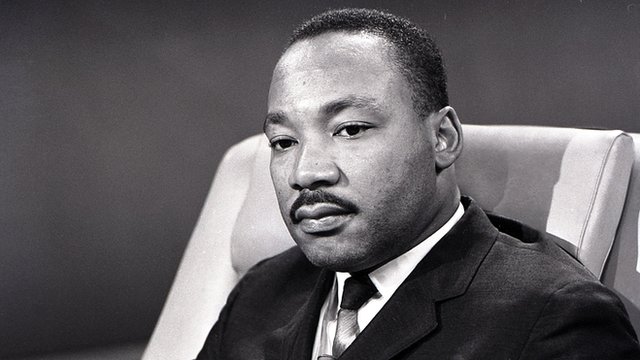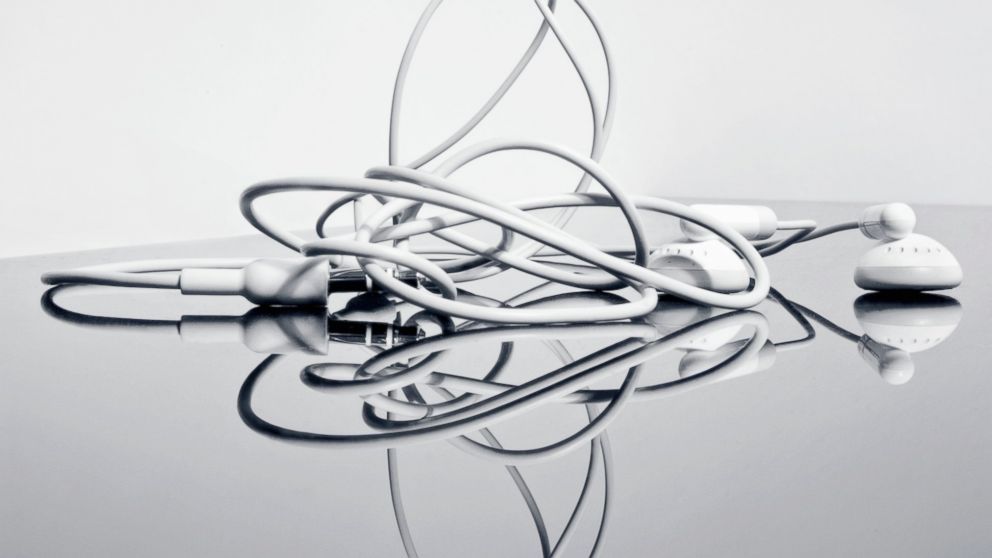Audiobookshelf
I started listening to audiobooks in 2014 or 2015. It was a huge productivity unlock but always ran into the monthly limit on Audible. I’d never set a reminder for when my new credit was available and would end up accidentally dropping the ball for months.
In 2017 I decided that anything spent on Audiobooks was worth it and started buying a book whenever I finished one.
(I also switched to Audiobooks.com app instead of Audible but that’s another story. TLDR: Dive in with Audiobooks.com, not Audible.)
Now I get through 3-4 books per month and people frequently ask which books I recommend.
The following is a relatively comprehensive list of books I’ve listened to and enjoy – both in terms of content and performance.
I’m always looking for recommendations so if you’ve found something you like please let me know.

Japan Pics 2018
I’m planning on editing some of the things I wrote while in Japan and sharing them, but I didn’t want that to get in the way with the sharing of these pictures.
If you only have a couple of minutes, I’ve made a greatest hits – you can see that here. Otherwise the below is a day by day visual catalog of our Japanese adventure!
(One viewing note, be sure to go full screen in Google Photos so you can see these as hi-res as possible. Many also have descriptions or backstories that you’ll need to be in full screen mode to see.)
Japan 2018 – Day 1: Travel, Shrines and 7-Eleven (20 pictures)
Japan 2018 – Day 2: Hedgehogs, Subway and Shinjuku Food Tour (45 pictures)
Japan 2018 – Day 3: Cars, Bars and Food in Tokyo (58 pictures)
Japan 2018 – Day 4: Running, Robots & Karayoke (65 pictures)
Japan 2018 – Day 5: Shinkansen, Snacks and Shrines (56 pictures)
Japan 2018 – Kyoto Day 1: Rivers, Temples and Shrines (68 pictures)
Japan 2018 – Kyoto Day 2: Life Inside a Train Station (32 pictures)
Japan 2018 – Okayama Day 1: Okonomiyaki, Coffee and Laundry (24 pictures)
Japan 2018 – Naoshima: Art Island in the Sea of Japan (56 pictures)
Japan 2018 – Osaka: Castles, Karaoke and Meat (56 pictures)
Japan 2018 – Osaka to Tokyo: Children’s Day and Shinkansen (25 pictures)
Japan 2018 – Tokyo Day 6: Cars and Cute-o (32 pictures)
Japan 2018 – Tokyo Day 7: Hashing and more (64 pictures)

Martin Luther King Jr. on the Importance of PeaceLove
I keep coming back to Dr. Martin Luther King Jr.
In a sea of divisive political rhetoric, reactionary social media takes and universal anxiety Dr. King doesn’t just provide solace, but a roadmap to affecting change.
While less known that some of his other works, his acceptance speech for the Nobel Prize in 1964 is one of my favorites.
In his autobiography it comes a couple of pages after his speech at the funeral of four children killed in their church in a bombing by the KKK.
His reasoned plea for peace and love comes against a backdrop of unspeakable hatred, an unsure future, a changing political climate and immense personal danger.
His moral clarity, personal sacrifice, optimism, eloquence and faith in all of humanity is something I consider every day.
I hope you find it meaningful too.
This award is a profound recognition that nonviolence is the answer to the crucial political and moral question of our time – the need for man to overcome oppression and violence without resorting to violence and oppression. Civilization and violence are antithetical concepts. Negroes of the United States, following the people of India, have demonstrated that nonviolence is not sterile passivity, but a powerful moral force which makes for social transformation. Sooner or later all the people of the world will have to discover a way to live together in peace, and thereby transform this pending cosmic elegy into a creative psalm of brotherhood. If this is to be achieved, man must evolve for all human conflict a method which rejects revenge, aggression and retaliation. The foundation of such a method is love.
The tortuous road which has led from Montgomery, Alabama to Oslo bears witness to this truth. This is a road over which millions of Negroes are travelling to find a new sense of dignity. This same road has opened for all Americans a new era of progress and hope. It has led to a new Civil Rights Bill, and it will, I am convinced, be widened and lengthened into a super highway of justice as Negro and white men in increasing numbers create alliances to overcome their common problems.
I accept this award today with an abiding faith in America and an audacious faith in the future of mankind. I refuse to accept despair as the final response to the ambiguities of history. I refuse to accept the idea that the “isness” of man’s present nature makes him morally incapable of reaching up for the eternal “oughtness” that forever confronts him. I refuse to accept the idea that man is mere flotsom and jetsom in the river of life, unable to influence the unfolding events which surround him. I refuse to accept the view that mankind is so tragically bound to the starless midnight of racism and war that the bright daybreak of peace and brotherhood can never become a reality.
I refuse to accept the cynical notion that nation after nation must spiral down a militaristic stairway into the hell of thermonuclear destruction. I believe that unarmed truth and unconditional love will have the final word in reality. This is why right temporarily defeated is stronger than evil triumphant. I believe that even amid today’s mortar bursts and whining bullets, there is still hope for a brighter tomorrow. I believe that wounded justice, lying prostrate on the blood-flowing streets of our nations, can be lifted from this dust of shame to reign supreme among the children of men. I have the audacity to believe that peoples everywhere can have three meals a day for their bodies, education and culture for their minds, and dignity, equality and freedom for their spirits. I believe that what self-centered men have torn down men other-centered can build up. I still believe that one day mankind will bow before the altars of God and be crowned triumphant over war and bloodshed, and nonviolent redemptive good will proclaim the rule of the land. “And the lion and the lamb shall lie down together and every man shall sit under his own vine and fig tree and none shall be afraid.” I still believe that We Shall overcome!
This faith can give us courage to face the uncertainties of the future. It will give our tired feet new strength as we continue our forward stride toward the city of freedom. When our days become dreary with low-hovering clouds and our nights become darker than a thousand midnights, we will know that we are living in the creative turmoil of a genuine civilization struggling to be born.
Today I come to Oslo as a trustee, inspired and with renewed dedication to humanity. I accept this prize on behalf of all men who love peace and brotherhood. I say I come as a trustee, for in the depths of my heart I am aware that this prize is much more than an honor to me personally.
Every time I take a flight, I am always mindful of the many people who make a successful journey possible – the known pilots and the unknown ground crew.
So you honor the dedicated pilots of our struggle who have sat at the controls as the freedom movement soared into orbit. You honor, once again, Chief Lutuli of South Africa, whose struggles with and for his people, are still met with the most brutal expression of man’s inhumanity to man. You honor the ground crew without whose labor and sacrifices the jet flights to freedom could never have left the earth. Most of these people will never make the headline and their names will not appear in Who’s Who. Yet when years have rolled past and when the blazing light of truth is focused on this marvellous age in which we live – men and women will know and children will be taught that we have a finer land, a better people, a more noble civilization – because these humble children of God were willing to suffer for righteousness’ sake.
I think Alfred Nobel would know what I mean when I say that I accept this award in the spirit of a curator of some precious heirloom which he holds in trust for its true owners – all those to whom beauty is truth and truth beauty – and in whose eyes the beauty of genuine brotherhood and peace is more precious than diamonds or silver or gold.
Watch the full speech here:
Your life’s work: 400 Miles of Hair
Why hasn’t anyone put this accomplishment on their tombstone?

The average human has 100,000 follicles of hair on their head.[1]
Each hair grows roughly .44mm a day.[2]
So the average person grows 44,000mm or 44 meters of hair a day.
That’s roughly the height of the world’s average tree.[3]
The average US person born today will live 78.74 years. [4]
If you grow a tree’s height of hair everyday and we assume you are at peak hair-growing for half your life (if only I were so lucky), you’d grow 39.37 years worth of tree-height-hairs.
That’s 14,370 44 meters (145 foot) tall hairs.
If you are a hoarder and saved each of those hairs laid them end to end the resulting hair would be 2,083,650 feet or 395 miles long.
(You could also trim them each day but then you’d have nearly 1.5 billion .44mm tiny hair trimmings.)
So if one day you are lucky enough to be invited to the White House to show off your life’s work of hair growing, you could start laying them out in the Oval Office and by the time you were done laying them end to end you’d be able to reach Faniuel Hall in Boston MA. [5]
*This does not factor in really hairy people, bald people or back-hair.
This post is another back of the envelope post like You’ll Spend 3.5 Days of Your Life Untangling Your Headphones. Follow me on Facebook to never miss one.

You’ll Spend 3.5 Days of Your Life Untangling Headphones
Now instead of just being frustrated that my headphones are always tangled, I’ll get to enjoy knowing I’m wasting a few days of my life.
Awesome.

Time Untangling Each Day I Wear Headphones
Untangle 4 times a day.
3 quick untangles, 1 long untangle.
Quick untangle: 4 seconds.
Long untangle: 20 seconds.
32 seconds a day.
How Often I Wear Headphones
Wear headphones 6 days a week.
Starting 8 years ago.
Working for another 30 years.
9,360 headphone wearing days.
The Results
299,520 seconds untangling headphones.
4,992 minutes.
83.2 hours.
Nearly 3 and a half days (3.4666)!
Chugging Facebook at 54,000 Miles an Hour
In college we took a tour of the Anheiser-Busch factory in Merrimack, NH.
It was an amazing operation watching the brewing, filling, labeling and quality control but the best part for me was the final step of the production line where 30-packs of fully packaged Bud Light were zipping by back to back at 20 miles an hour.
I asked our guide how often the operation worked like this and was blown away when he told me “all three shifts”.
I had to clarify “you mean 24 hours a day?”
“Yes.” Came the reply. “365 days a year, the line is shipping beer like this.”
This was stunning into itself but absolutely floored me when I realized that meant New England had to be drinking beer at that same speed!
Basically the 8 tiny states this factory shipped to where on the other end of a giant beer funnel shooting 30 packs into their mouths faster than most people can run.

Yesterday we broke down a quick back of the envelope estimation of how much Facebook timeline is made each day: 1,300,000 miles.
Today I realized we could look at it in the same way as that assembly line which means, if we were printing the Facebook timeline in real time we’d be printing a sheet of a paper moving at 54,000 miles an hour.
That’s 10x the speed of sound and 15 miles per second.
If each thumb swipe gave you a new 4″ of content you’d need to be swiping 310,000 times per second to keep up.
Want to know just how fast that is? Here’s a video that starts a 4 hertz and goes up to 300,000. Imagine each cycle is a thumbswipe!
A Million Miles of Facebook a Day
Ed Note: For some reason my brain is always asking crazy random questions. And for some reason I like to try and figure them out. For a long time I’d just do them on the back of an envelope, but figured why not share them with the world.
What do you think? Have something you’d like me to sketch on the back of an envelope? Tweet it to me at @aten!
I was browsing Facebook the other day and lost a post. I knew I had seen it earlier but wanted to find it again. So I started scrolling. And scrolling. AND SCROLLING.
And I wondered: If Facebook was actually printed how much Facebook would people scroll each day? So I tried to figure it out.
1 Billion people use Facebook everyday [1].
The spend 20 minuntes on average [1].
So humanity is spending about 10 Billion minutes on Facebook a day [2].
I’d guess about 1/2 of that time is on the timeline (vs Reading stories or looking at pictures) [2] so approx 5 Billion minutes a day are spent on the timeline [2].
If people look at each screen for 5 seconds [3] before flipping to the next screen we get 25 Billion screens of content a day [4].
The average phone has a screen height of 3.5” [3] (and I’m totally ignoring desktop here).
So people are scrolling something like 87.5 billion inches of virtual screens every day.
Which is roughly:
1.3M miles or 56 times around the earth every day [4].
[1] Actual Number
[2] Calculated from Actual Numbers
[3] Ed Estimate
[4] Calculation includes Estimates
App Store Screenshot Template for iPhone Screenshots
TLDR: Here’s the easiest way to make screenshots for the App Store for iPhone 4, iPhone 5, iPhone 6 and iPhone 6+.
When we first shipped the Merchbar iPhone app, we were way deep into shipping before we realized we needed demo screenshots for the App Store.
I decided to roll with the punch and make it happen, but 97% of my hope was destroyed when I realized I was going to have to make 5 separate images in 4 different sizes.
Maybe I could just make the larger size and that would work for all of them?
Nope.
Maybe I could make one version and just scale them down?
No such luck (they have different aspect ratios).
So I got out my coarse sandpaper and decided to grind through it.
All was good until the last minute when I realized I had a typo and had to go update it on 4 different documents and then export each screenshot individually.
I went to head to table over that one (not really).
So when we did v2 of the app I put together a handy action to help you make iPhone App Store Screenshots and wrote about it.
But this time I went back to the drawing board and did it right with Photoshops new Art Board feature.
Now for your ease, pleasure and enjoyment tap here to check out the easiest way to make App Store Screenshots in all the sizes you need.
Totally free. Totally fun. Totally free of that head on table thing.
Fear: Our National Relgion
I found this essay from Grateful Dead lyricist and EFF Founder John Perry Barlow 15 or 20 years ago as I wandered around the loosely connected, barely organized morass of pages that was the internet of the mid 90s[1].
One section in particular was instantly memorized – A few lines that I now repeat in my brain on a nearly daily basis:
So we have erected a glowing altar in the center of our lives that feeds on our terror, and Fear has become our national religion.
